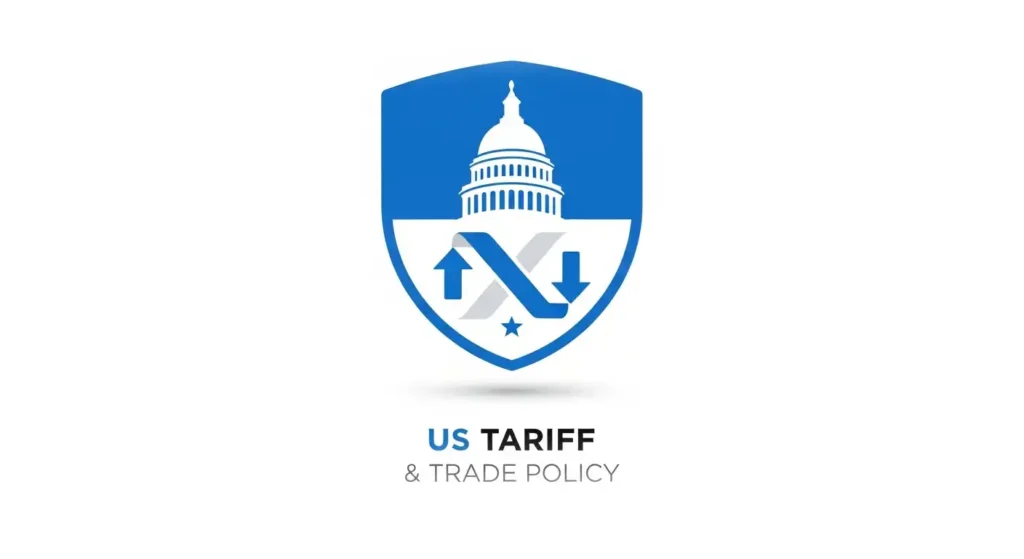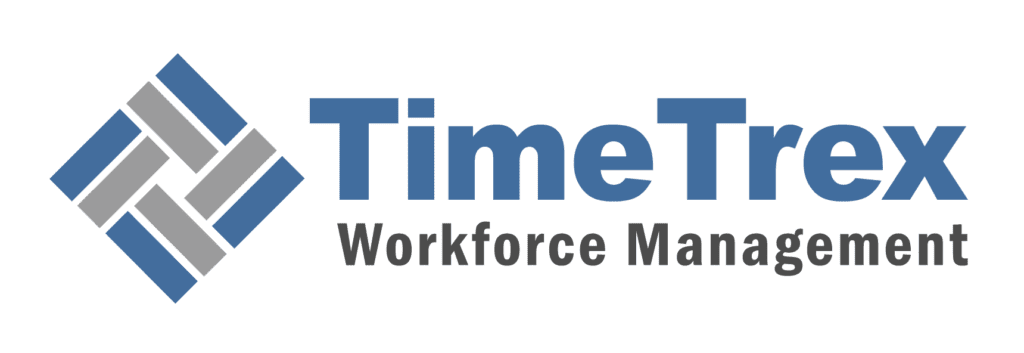
U.S. Tariff & Trade Policy and Your Business
The year 2025 has ushered in a seismic shift in U.S. tariff policy, creating a complex and challenging new environment for businesses. A move away from traditional trade agreements has been replaced by a broad-based, coercive tariff regime impacting nearly every global trading partner. For any business involved in international trade, understanding this new landscape of reciprocal tariffs, Section 232 duties, and the weaponization of trade policy is no longer optional—it's essential for survival and strategic planning. This article deconstructs the new U.S. trade architecture, its implementation, and its consequences for the global economy, providing the critical insights your business needs to navigate the uncertainty.
In This Article
- TL;DR
- The Architecture of "Reciprocal Trade"
- Global Application: A World Under Tariffs
- High-Stakes Negotiations: Key Bilateral Fronts
- Sectoral Shockwaves: Industry-by-Industry Impact Analysis
- The Global Response: Retaliation and Institutional Crisis
- The Macroeconomic Verdict: Synthesizing the Economic Data
- Strategic Synthesis and Forward Outlook
- Calculate Your Tariff Impact
TL;DR
The year 2025 marks a disruptive shift in U.S. trade policy, with the administration implementing a broad-based tariff regime using executive authority under laws like the International Emergency Economic Powers Act (IEEPA) and Section 232 of the Trade Expansion Act. By declaring the U.S. trade deficit a national emergency, a global "reciprocal tariff" system has been imposed, with duties ranging from 10% to over 40% on most trading partners, alongside steep sectoral tariffs on steel, aluminum, copper, and autos. This policy has created a tiered system: "Aligned Partners" like the EU and Japan have secured tariff relief in exchange for massive investment pledges (a "tariff-for-investment" model), while others, like India, face punitive tariffs linked to geopolitical issues. Economists from the CBO and PIIE agree the tariffs will have a net negative impact on U.S. GDP and raise inflation, with the cost borne primarily by U.S. importers and consumers. The entire framework faces legal peril, pending a critical Supreme Court decision. The strategy has weaponized trade policy, triggering international retaliation and placing the WTO under existential strain.
The Architecture of "Reciprocal Trade": Legal Foundations and Policy Implementation
The tariff regime implemented in 2025 is a fundamental reconstruction of U.S. trade policy's legal and ideological underpinnings. The administration has shifted from traditional trade law, which requires evidence of specific unfair practices, to broad statutes granting expansive executive power in the name of national emergency and security.
The Ideological Shift: From Trade Dispute to National Emergency
The central pillar of the new policy is reframing the persistent U.S. goods trade deficit as an "unusual and extraordinary threat" to national security. This was formalized in Executive Order 14257, which declared a national emergency, unlocking the vast powers within the IEEPA. This transforms the trade deficit from an economic debate into a national security crisis requiring immediate executive action, providing the legal pretext for sweeping tariffs.
Invoking Emergency Powers (IEEPA)
The primary legal vehicle has been the International Emergency Economic Powers Act of 1977, traditionally used for sanctions against hostile states. Its application to global trade is a novel and aggressive interpretation. A two-tiered system of "reciprocal tariffs" was established: a baseline 10% ad valorem tariff on all imports, followed by higher, country-specific rates. IEEPA has also been used to target specific foreign policy objectives, such as imposing tariffs on China, Mexico, and Canada to combat the fentanyl supply chain and a punitive tariff on India for its purchases of Russian oil.
Leveraging National Security (Section 232)
Simultaneously, the administration has dramatically expanded its use of Section 232 of the Trade Expansion Act of 1962, which authorizes import restrictions on national security grounds. This authority has been used to erect formidable barriers:
- Steel and Aluminum: Tariffs increased to 50% in June 2025.
- Automobiles and Auto Parts: A 25% tariff imposed in April/May 2025.
- Copper: A 50% tariff on the copper content of many products implemented in August 2025.
New Section 232 investigations into semiconductors, pharmaceuticals, critical minerals, and more signal a clear intent to continue this strategy.
Dismantling Trade Facilitation (De Minimis)
Beyond direct tariffs, the administration suspended the de minimis exemption, a provision that allowed shipments valued under $800 to enter the U.S. duty-free. Initially targeting China, this suspension was expanded globally, effective August 29, 2025. This action represents a significant non-tariff barrier, particularly for e-commerce businesses.
The Legal Gauntlet
The administration's aggressive use of emergency powers faces formidable legal challenges. Federal courts have ruled that the IEEPA-based tariffs exceed presidential authority. However, the tariffs remain in effect pending an appeal to the Supreme Court in the case of Learning Resources v. Trump. The outcome of this case is the single greatest variable facing U.S. trade policy and could invalidate the entire reciprocal tariff regime.
Global Application: A World Under Tariffs
On August 7, 2025, the U.S. implemented a complex matrix of country-specific "reciprocal tariffs" via Executive Order 14326. This subjected nearly every nation to a new, higher baseline of U.S. import taxes. The tariff rates range widely, with countries like Syria (41%) and South Africa (30%) facing high levies, while partners who negotiated, like the UK and Brazil, secured lower 10% rates. A critical component is a 40% penalty tariff on goods transshipped through a third country to evade duties.
The table below provides a consolidated overview of the multi-layered tariff structure as of mid-September 2025.
| Country/Region | Tariff Type | Ad Valorem Rate | Effective Date/Status | Key Notes/Exemptions |
|---|---|---|---|---|
| Global | Reciprocal (Baseline) | 10% | Effective Apr. 5, 2025 | Replaced by country-specific rates for many nations on Aug. 7. |
| Global | De Minimis Suspension | All applicable duties | Effective Aug. 29, 2025 | Ends duty-free treatment for shipments valued under $800. |
| Global | Section 232 (Steel & Aluminum) | 50% | Effective June 4, 2025 | Applies to steel, aluminum, and derivative products. |
| Global | Section 232 (Automobiles & Parts) | 25% | Effective Apr. 3 / May 3, 2025 | Applies to passenger vehicles and certain auto parts. |
| Global | Section 232 (Copper) | 50% | Effective Aug. 1, 2025 | Applies to copper content of covered semi-finished products. |
| Afghanistan | Reciprocal | 15% | Effective Aug. 7, 2025 | |
| Brazil | Reciprocal | 10% | Effective Aug. 7, 2025 | Lower rate reflects ongoing diplomatic engagement. |
| Canada | Fentanyl-related (IEEPA) | 35% | Effective Aug. 1, 2025 | Exempts goods qualifying for USMCA duty-free treatment. 10% on energy/potash. |
| China | Reciprocal | 34% (Delayed) | Delayed until Nov. 10, 2025 | Currently subject to 10% baseline rate pending negotiations. |
| China | Fentanyl-related (IEEPA) | 20% | Effective Mar. 3, 2025 | Applies to all goods from China, Hong Kong, and Macau. |
| European Union | Reciprocal | 15% (or 0%) | Effective Sept. 1, 2025 | Tariff is capped at 15% total; 0% if existing U.S. tariff is >15%. |
| India | Reciprocal | 25% | Effective Aug. 7, 2025 | |
| India | Russian Oil (IEEPA) | 25% (Additional) | Effective Aug. 27, 2025 | Punitive tariff for continued purchases of Russian oil, bringing total to 50% on most goods. |
| Japan | Reciprocal | 15% | Effective Sept. 4, 2025 | Reflects negotiated agreement. Auto tariffs reduced from 27.5%. |
| Mexico | Fentanyl-related (IEEPA) | 25% | Effective Mar. 4, 2025 | Exempts goods qualifying for USMCA duty-free treatment. 10% on potash. |
| Switzerland | Reciprocal | 39% | Effective Aug. 7, 2025 | High rate attributed to financial opacity concerns. |
High-Stakes Negotiations: Key Bilateral Fronts
The tariffs serve as a primary instrument of a coercive diplomatic strategy, forcing key partners into negotiations where tariff relief is granted in exchange for massive foreign direct investment and geopolitical alignment.
The U.S.-China Front: A Volatile Truce
The U.S.-China relationship has been the most volatile. After a rapid, tit-for-tat escalation that saw U.S. tariffs on Chinese goods spiral to 145%, a temporary truce was brokered. The U.S. reduced its reciprocal tariff to 10% (for a total of 30% including the fentanyl tariff), and China lowered its retaliation to 10%. This truce has been extended to November 10, 2025, but the relationship remains exceptionally fragile, with the deadline looming as a potential flashpoint for renewed conflict.
The Transatlantic Reset (U.S.-EU)
The U.S.-EU relationship is a clear example of the "tariff-for-investment" strategy. Faced with high tariffs, the EU negotiated a framework agreement where the U.S. capped its reciprocal tariff on EU goods at 15%. In exchange, the EU reportedly committed to a massive $600 billion investment package in the United States and increased purchases of U.S. energy exports.
The India Dilemma: Tariffs as Geopolitical Punishment
In stark contrast, India has been singled out for punishment. On August 27, 2025, the U.S. imposed an additional 25% punitive tariff on most Indian imports, explicitly citing India's continued purchases of Russian oil. This brought the total tariff burden on many Indian goods to 50%. Indian officials have been clear that progress in trade talks is contingent on Washington revoking this punitive tariff.
The Japan Accord: A Negotiated De-escalation
Japan also followed the tariff-for-investment model. Through intensive negotiations, Japan secured significant relief, including a lower 15% tariff on automobiles and an end to tariff "stacking." This de-escalation was explicitly secured in exchange for a landmark $550 billion investment pledge to rebuild American industries and increased purchases of U.S. agriculture and energy products.
Sectoral Shockwaves: Industry-by-Industry Impact Analysis
The tariff regime has sent shockwaves through the economy, with impacts varying significantly across sectors. Measures designed to protect upstream primary industries have increased costs for downstream manufacturing and consumer-facing sectors.
Key Takeaway: Protection for primary industries like steel and aluminum has created a ripple effect, raising input costs for a vast array of domestic manufacturers, from automakers to appliance producers.
- Manufacturing (Steel, Aluminum, Copper): While intended to protect domestic producers, the 50% tariffs on these primary metals have acted as a tax on domestic manufacturing, severely increasing input costs for countless downstream industries.
- Automotive: The auto industry faces a perfect storm: a 25% tariff on imported vehicles and parts, 50% tariffs on steel and aluminum raising production costs, and retaliatory tariffs from key export markets. Analysts estimate these factors could increase vehicle prices by $2,000 to $4,000 per unit.
- Consumer Goods: Industries like home appliances face higher steel and aluminum costs. Clothing and footwear sectors, heavily reliant on global sourcing, face projected price increases of up to 40%. The home textiles industry, for example, is projected to see a 5-10% revenue decline due to the 50% tariff on goods from India.
- Agriculture: The U.S. agricultural sector has been a prime target for international retaliation. China has imposed 10-15% tariffs on soybeans, corn, and pork, while the EU has targeted $12 billion worth of U.S. farm goods, shrinking key export markets for American farmers.
- Technology and IT Services: A new front is emerging with the proposed "HIRE Act," which would reportedly impose a 25% tax on jobs U.S. companies send overseas. This poses a direct threat to the IT outsourcing industry and could increase operational costs for U.S. multinationals by up to 60%.
The Global Response: Retaliation and Institutional Crisis
The unilateral U.S. tariffs have provoked a complex global reaction characterized by direct retaliation, a realignment of trade relationships, and a deepening crisis for the World Trade Organization (WTO).
Tit-for-Tat Retaliation
Major trading partners have responded with direct countermeasures, targeting sensitive American exports and transforming the U.S. action into a broader trade conflict.
| Retaliating Country/Region | Retaliatory Tariff Rate | Key U.S. Products Targeted |
|---|---|---|
| China | 10-15% (under truce) | Soybeans, corn, pork, beef, wheat, coal, LNG, crude oil |
| European Union | 10-30% (suspended) | Soybeans, almonds, pistachios, wheat, whiskey, various industrial goods |
| Canada | 25% | Steel, aluminum, automobiles, orange juice, peanut butter, wine |
The WTO Under Strain
The U.S. actions have precipitated a crisis at the WTO. Numerous countries have challenged the measures as violations of core principles. The U.S. has justified its tariffs on national security grounds, a claim other members view as a pretext. This conflict is exacerbated by the non-functional state of the WTO's Appellate Body, largely due to U.S. blocking of appointments, leaving countries without a formal path for recourse. The U.S. strategy has successfully split the international response, preventing a unified coalition and allowing Washington to impose its framework on a one-by-one basis.
The Macroeconomic Verdict: Synthesizing the Economic Data
A broad consensus has emerged from non-partisan economic bodies: while the tariffs will increase federal revenue, this comes at the cost of reduced economic growth, higher inflation, and a substantial financial burden on American consumers and businesses.
- Reduced Growth: The Congressional Budget Office (CBO) projects the tariffs will reduce the level of real GDP by 0.6% by 2035. The Penn Wharton Budget Model offers a more stark forecast, projecting a long-run GDP reduction of about 6%.
- Increased Inflation: The CBO projects an increase in the annual inflation rate by 0.4 percentage points in 2025 and 2026. This directly reduces the purchasing power of U.S. households.
- Burden of Payment: Research from the Peterson Institute for International Economics (PIIE) concludes that U.S. businesses have absorbed most of the tariff costs. The ultimate burden falls on American households, with the National Taxpayers Union calculating the tariffs amount to a tax increase of $158 per month per household.
- Federal Revenue vs. Economic Drag: The tariffs are projected to reduce federal deficits by $4.0 trillion over ten years. However, this is a transfer from U.S. consumers and businesses to the Treasury. The negative effects of distorted investment, reduced productivity, and lower output outweigh the revenue benefits, resulting in a net drag on the overall economy.
Strategic Synthesis and Forward Outlook
The 2025 U.S. tariff regime is more than simple protectionism; it is a multi-purpose strategic weapon being used to force industrial reshoring, generate federal revenue, coerce foreign direct investment, enforce foreign policy, and disrupt the global trade order.
For businesses, the primary challenge is navigating profound uncertainty. Stakeholders must closely monitor several key developments:
- The Supreme Court Ruling: The outcome of Learning Resources v. Trump could invalidate the entire legal framework.
- The U.S.-China Truce Deadline: The November 10, 2025, deadline will determine if a devastating trade conflict resumes.
- U.S.-India Negotiations: The resolution of the punitive "Russian oil" tariff will be a key indicator of U.S. diplomatic strategy.
- New Section 232 Actions: Investigations into semiconductors, pharmaceuticals, and drones could significantly broaden the scope of the trade conflict.
- Expansion to Services: The potential passage of legislation taxing the offshoring of services represents a major potential escalation into the digital realm.
The United States has embarked on a radical experiment in trade policy. The immediate result is a global economy characterized by heightened risk, fractured alliances, and a fundamental challenge to the principles of free and open trade.
Is Your Business Ready for the Tariff Shockwave?
The new landscape of U.S. tariffs is complex and constantly evolving. Don't let uncertainty dictate your bottom line. Use our powerful calculator to estimate the potential impact of these new duties on your specific products and supply chain.
Calculate Your Tariff Impact NowDisclaimer: The content provided on this webpage is for informational purposes only and is not intended to be a substitute for professional advice. While we strive to ensure the accuracy and timeliness of the information presented here, the details may change over time or vary in different jurisdictions. Therefore, we do not guarantee the completeness, reliability, or absolute accuracy of this information. The information on this page should not be used as a basis for making legal, financial, or any other key decisions. We strongly advise consulting with a qualified professional or expert in the relevant field for specific advice, guidance, or services. By using this webpage, you acknowledge that the information is offered “as is” and that we are not liable for any errors, omissions, or inaccuracies in the content, nor for any actions taken based on the information provided. We shall not be held liable for any direct, indirect, incidental, consequential, or punitive damages arising out of your access to, use of, or reliance on any content on this page.
About The Author

Roger Wood
With a Baccalaureate of Science and advanced studies in business, Roger has successfully managed businesses across five continents. His extensive global experience and strategic insights contribute significantly to the success of TimeTrex. His expertise and dedication ensure we deliver top-notch solutions to our clients around the world.
Time To Clock-In
Start your 30-day free trial!
Experience the Ultimate Workforce Solution and Revolutionize Your Business Today
- Eliminate Errors
- Simple & Easy To Use
- Real-time Reporting

Saving businesses time and money through better workforce management since 2003.
Copyright © 2025 TimeTrex. All Rights Reserved.
